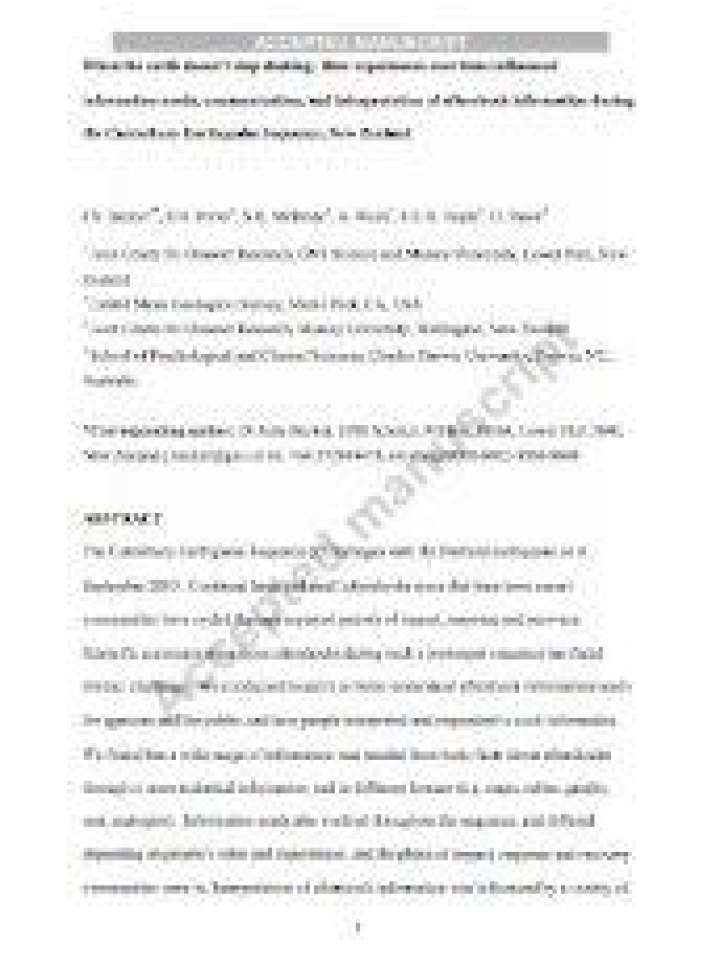When the earth doesn’t stop shaking: How experiences over time influenced information needs, communication, and interpretation of aftershock information during the Canterbury Earthquake Sequence, New Zealand
The Canterbury Earthquake Sequence (CES) began with the Darfield earthquake on 4 September 2010. Continual large and small aftershocks since that time have meant communities have cycled through repeated periods of impact, response and recovery. Scientific communication about aftershocks during such a prolonged sequence has faced distinct challenges.
This research aimed to improve understanding of aftershock information needs for agencies and the public, and how people interpreted and responded to such information. It found that a wide range of information was needed from basic facts about aftershocks through to more technical information, and in different formats (e.g. maps, tables, graphs, text, analogies). Information needs also evolved throughout the sequence, and differed depending on people's roles and experiences, and the phase of impact, response and recovery communities were in. Interpretation of aftershock information was influenced by a variety of factors including how understandable and relevant the information was, whether people had prior knowledge or experience of aftershocks, whether the information was personalised or contextualised, emotions and feelings, credibility and trust, and external influences. Given that such a diversity of evolving information is required, it is imperative that geoscientists strategize how to provide such information before a significant earthquake occurs.

